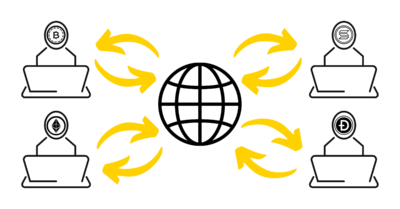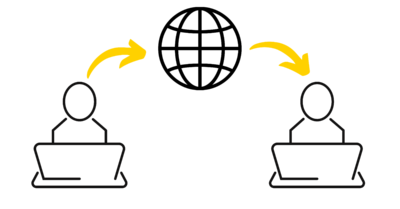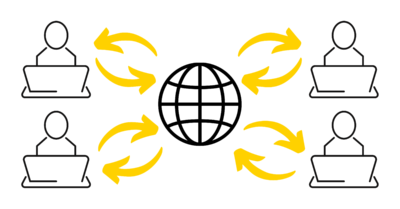Remember marketing before social? Probably not – but yes, there was a time when brands weren’t measuring likes and followers. Safe to say, the arrival of social media changed just about everything in terms of how people interact with brands.
Now that you’ve mastered that, you intrepid marketer, it looks as though things are changing again.
Depending on who you choose to listen to (and we’re glad you have chosen us), Web3 is here. Instead of just blindly accepting that as a fact, here’s what that means exactly.
WEB1
Web1 is the original, public internet, circa 1995. This is the “read” era of the web, where users visit various websites and digital destinations. “Surfing the internet.”
WEB2
Web2 is the web you are most familiar with, the internet of today, circa 2008. With Web2, users can not only read – they can write. This is most commonly expressed as social media. In fact, most of the content on the internet today is user-generated. Facebook, YouTube, etc…
 WEB3
WEB3
So – what’s the key driver behind the evolution of Web3? In Web3, we can read, write and OWN. Yep, own. Here’s what that means through a classic Web2 brand expression.
Let’s say your brand has 500,000 Instagram followers. Great job! But – you don’t own those followers. In fact, a huge, multi-billion dollar company sits between you and your audience and that company is owned by Mark Zuckerberg. Your Instagram followers are his.
Web3 allows organizations to truly own their communities, and the emergent technology now exists for all to empower the decentralization of the internet. Therefore, decentralization is one of the key tenets of Web3.
But – What does that look like? How would a Web3 community differ from a Web2?
A Web2 community would reside on a social platform, like Instagram. Anyone with an Instagram account could join and access the community.
A Web3 community could issue a token. Users who acquired a token could receive gated access to a community space, such as a Discord.
This is a very basic example structure, but it demonstrates two critical concepts of decentralization and ownership that really differentiate Web3 from Web2. One could easily imagine a scenario with a large, expansive brand such as Disney – whose token could represent access, payment and participation across a wide range of industries, all of which would be owned by Disney independently.
“a huge, multi-billion dollar company sits between you and your audience.”
We have been moving ever deeper into digital for decades now, and Web3 presents the next evolution of our journey. Our work with cult brands touches on a number of different forms and technology. We’re always paying attention to techniques and trends, and according to us, you should be paying attention here, too. It’s still very early in the evolution of Web3, but it’s clear that the rise of a $2T crypto market cap (Yes, that’s T for trillion) and the arrival of NFTs plant the Web3 flag firmly in the digital dirt.




